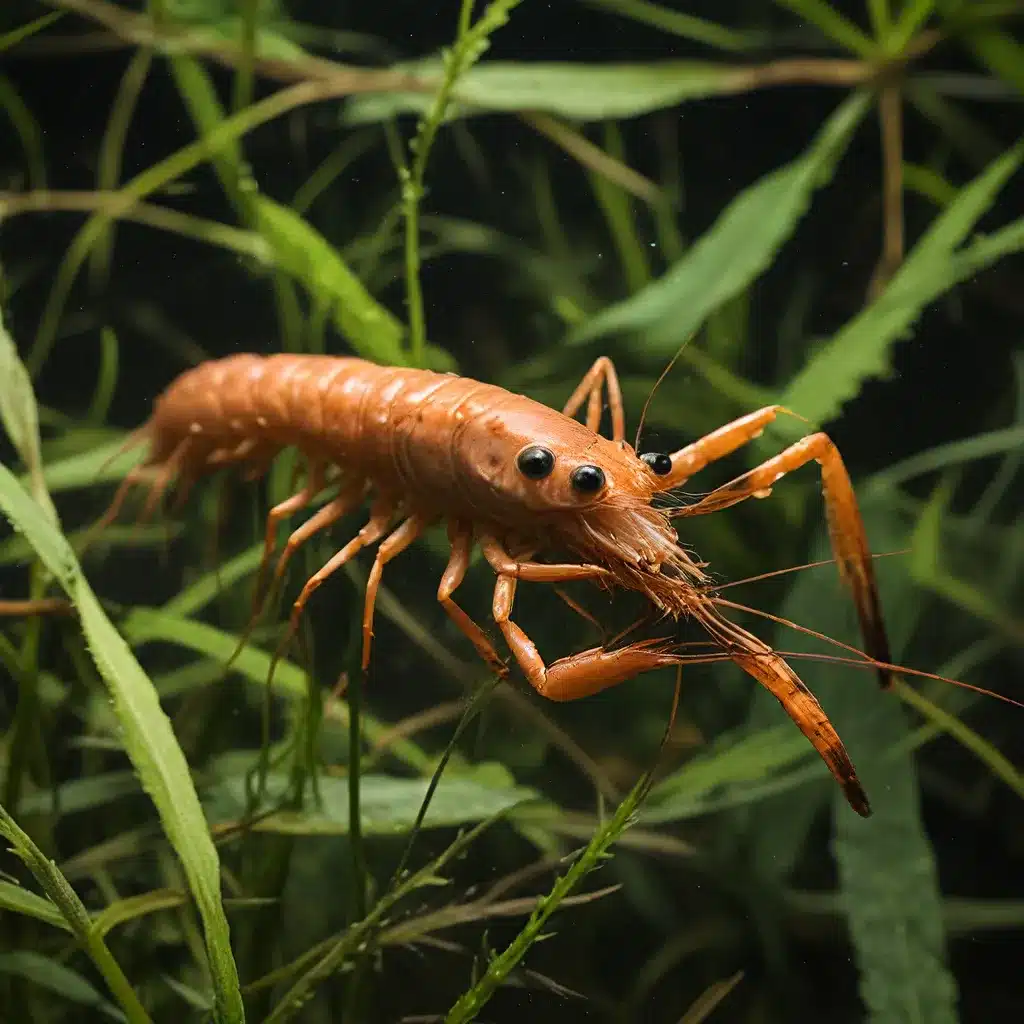
Unveiling the Hidden Gems of the Amazon
The Amazon basin, with its vast network of rivers, streams, and lakes, is home to a remarkable diversity of aquatic life. While the vibrant colors and captivating behaviors of Amazonian fish species have long captivated the aquarium hobby, there is another group of fascinating creatures that have often been overlooked: the freshwater shrimp.
Rosie Chapina’s research on the impacts of climate change on zooplankton, particularly mysid shrimp, has shed light on the intriguing migration patterns and predator-prey interactions of these diminutive crustaceans. Her work serves as a reminder that even the smallest inhabitants of aquatic ecosystems play crucial roles in the delicate food webs that sustain these environments.
The world of freshwater shrimp is a veritable treasure trove, with species like the Pseudopalaemon and Macrobrachium genera thriving in the leaf-litter-rich streams and blackwater habitats of the Amazon. These shrimp, adapted to the unique water chemistry and environmental conditions of their native region, offer aquarists the opportunity to recreate captivating microcosms of these enigmatic ecosystems.
Aquarists’ Delight: Exploring Amazonian Shrimp
While the hobby has long been enamored with the vibrant colors and intriguing behaviors of fish from the Amazon, the potential of Amazonian shrimp has largely remained untapped. These unsung heroes of the aquatic world possess a wealth of adaptations and ecological significance that make them fascinating subjects for aquarium enthusiasts.
One of the standout features of Amazonian shrimp is their ability to thrive in the acidic, nutrient-poor blackwater environments that characterize many of the region’s waterways. Species like the Pseudopalaemon and Macrobrachium genera have evolved to capitalize on the unique food sources and environmental conditions found in these habitats, often filling critical niches within the complex food webs.
Interestingly, the Macrobrachium species are known to feed primarily on leaf litter detritus and associated fungi, while the Pseudopalaemon shrimp tend to focus more on algal growth. This partitioning of resources highlights the intricate adaptations that have allowed these shrimp to coexist and flourish in their native environments.
The diversity of Amazonian shrimp species is truly remarkable, with researchers identifying a multitude of genera and over 50 species that are known to serve as prey for various Amazonian fish. This abundance speaks to the ecological importance of these crustaceans, as they play a vital role in supporting the complex food webs that sustain the region’s aquatic ecosystems.
Recreating Amazonian Biotopes: Challenges and Considerations
For aquarists interested in replicating the natural habitats of Amazonian shrimp, there are several key factors to consider. Maintaining the appropriate water chemistry, including low pH, reduced mineral content, and tannin-stained waters, is crucial for the long-term health and well-being of these specialized inhabitants.
In addition to water parameters, the substrate composition and presence of abundant leaf litter are essential elements in creating a suitable environment for Amazonian shrimp. These detritus-rich environments not only provide essential food sources but also mimic the complex microhabitats found in their native streams and tributaries.
Incorporating live aquatic plants that are adapted to the low-light, nutrient-poor conditions of blackwater systems can further enhance the authenticity of the biotope. Species such as Cryptocoryne and Anubias thrive in these environments and can help to create a visually striking and ecologically balanced aquarium.
One of the primary challenges in keeping Amazonian shrimp is ensuring that their delicate environmental requirements are met. Careful monitoring of water parameters, regular maintenance, and a deep understanding of the specific needs of each species are essential for successful long-term aquarium keeping.
Sustainable Aquarium Practices for Amazonian Shrimp
As the aquarium hobby continues to evolve, there is a growing emphasis on sustainable practices that prioritize the well-being of aquatic organisms and the preservation of their natural habitats. When it comes to Amazonian shrimp, this ethos is particularly crucial.
King Aquarium encourages hobbyists to explore the potential of captive-bred or sustainably sourced Amazonian shrimp, rather than relying on wild-caught specimens. This approach not only helps to protect fragile Amazonian ecosystems but also ensures the long-term availability of these fascinating creatures for the aquarium community.
Furthermore, the promotion of biotope-specific aquascaping techniques and water management strategies can help to create thriving aquarium ecosystems that mimic the natural habitats of Amazonian shrimp. By replicating the unique environmental conditions of these regions, aquarists can provide their captive shrimp with the best possible care and contribute to the overall health and sustainability of these aquatic communities.
Conclusion: Discovering the Hidden Wonders of Freshwater Shrimp
As the aquarium hobby continues to evolve, the exploration of lesser-known aquatic life, such as the freshwater shrimp of the Amazon, offers a wealth of opportunities for enthusiasts to expand their knowledge and appreciation of the natural world.
By delving into the intricate adaptations and ecological roles of Amazonian shrimp, aquarists can unlock a new dimension of fascination and wonder within their aquariums. Through the careful recreation of their native habitats and the promotion of sustainable sourcing practices, we can not only enjoy the beauty of these creatures but also contribute to the preservation of the delicate ecosystems they call home.
As you embark on your journey of discovery, remember to stay curious, stay diligent, and stay dedicated to the art and science of aquarium keeping. The hidden gems of the Amazon await, and the rewards of unveiling their secrets are truly immeasurable.

